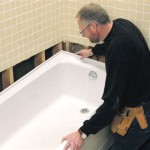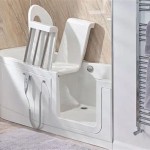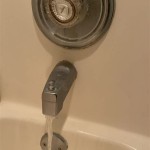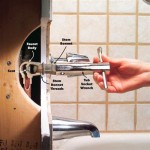Flying Ants Emerging from Bathtub Drains: Understanding the Phenomenon
The sudden appearance of flying ants in a home, particularly emerging from a bathtub drain, can be a perplexing and unsettling experience. This phenomenon often indicates a more significant problem than a simple nuisance. Understanding the underlying causes and potential implications is crucial for effective management and prevention.
Swarming Behavior and Seasonal Patterns
Flying ants, also known as alates, are the reproductive members of an ant colony. Their presence usually signals that a colony has matured and is ready to reproduce. The "swarm" is a mating flight, and it's a natural part of the ant life cycle. This behavior is triggered by specific environmental conditions, typically warmer weather and high humidity, which explains why these events are often observed in the spring and summer months. The synchronization allows for increased genetic diversity as ants from different colonies interbreed.
Different species of ants have different swarming seasons. Identifying the specific type of ant is vital in determining the best course of action. Some species may only swarm for a short period, while others may have multiple smaller swarms throughout the warmer months. Observing the size, color, and physical characteristics of the flying ants can aid in identification. Consulting with a pest control professional or using online resources with detailed ant identification guides is recommended.
It's important to differentiate flying ants from termites, as they require different treatment approaches. Termites have straight antennae, uniform bodies with no defined waist, and wings of equal length. Flying ants have bent antennae, a constricted waist, and forewings that are larger than hindwings. Mistaking one for the other can lead to ineffective or even harmful pest control strategies.
The Significance of Bathtub Drains as Entry Points
The appearance of flying ants in a bathtub drain is a strong indicator of a nearby nest. Drains, particularly those connected to plumbing systems, provide ants with a readily accessible pathway into the home. The moist environment inside the drain pipes and beneath the bathroom floor provides conducive conditions for nesting. Leaky pipes, condensation, and other forms of moisture accumulation create an ideal environment for ant colonies to thrive. The drain itself may not be the exact nest location, but rather a convenient entry point to and from a nest located nearby, potentially in wall cavities or under the foundation.
The voids beneath bathroom tiles or within the walls surrounding the plumbing can also provide suitable nesting sites. These spaces are often dark, protected, and relatively undisturbed, making them attractive to ant colonies. The presence of decaying organic matter, such as hair, soap scum, and other debris that accumulate within drains, can also serve as a food source for certain ant species. This combination of shelter, moisture, and food provides a self-sustaining ecosystem that allows colonies to flourish.
Routine plumbing inspections and maintenance are crucial for preventing ant infestations in bathrooms. Addressing leaks promptly and ensuring proper drainage reduces the availability of moisture, making the environment less hospitable to ants. Regularly cleaning drains with a mixture of baking soda and vinegar can help remove organic matter and deter ants from using them as pathways. Preventing moisture buildup is a key strategy in controlling ant populations in and around the home.
Potential Nesting Locations and Colony Size
When flying ants are spotted emerging from drains, the nesting site is unlikely to be directly within the drain itself. The colony is most likely situated nearby, using the drain as a convenient access point. Common nesting locations include the soil surrounding the foundation, under concrete slabs, within wall voids, and in decaying wood structures. The specific location will depend on factors such as the ant species, the availability of moisture and food, and the structural characteristics of the building.
Determining the exact location of the nest can be challenging, as ants are adept at concealing their colonies. Careful observation of ant trails, the direction of their movement, and the areas where they are most frequently observed can provide clues to the nest's location. It is crucial to inspect areas near plumbing fixtures, such as under sinks, behind toilets, and around water heaters. Exterior inspections should also focus on potential entry points, such as cracks in the foundation, gaps around pipes and wires, and areas where vegetation comes into contact with the building.
The size of the ant colony can vary significantly depending on the species and the age of the colony. Some ant species have relatively small colonies, while others can have colonies consisting of tens of thousands or even millions of individuals. A large colony can cause significant damage to a building's structure, particularly if the ants are nesting within wooden components. Larger colonies also require more resources, leading to increased foraging activity both inside and outside the home. Therefore, effectively addressing a flying ant problem requires identifying and eliminating the entire colony, not just the visible flying ants.
Addressing a mature ant colony can be complex. Some DIY solutions may offer temporary relief, but professional intervention is often necessary to completely eradicate the infestation. Pest control professionals have the expertise and specialized equipment to locate and treat ant nests effectively, minimizing the risk of recurrence.
Identifying the specific ant species is paramount for effective pest control. Different species exhibit different behaviors and have varying susceptibility to different insecticides. For instance, some ant species are attracted to sugary baits, while others prefer protein-based baits. Using the wrong type of bait will not be effective in eliminating the colony. A pest control professional can accurately identify the ant species and recommend the most appropriate treatment strategy.
Integrated Pest Management (IPM) strategies are recommended for managing ant infestations. IPM focuses on using a combination of methods, including preventative measures, sanitation practices, and targeted insecticide applications, to minimize environmental impact and promote long-term control. This approach emphasizes addressing the root causes of the infestation, such as eliminating moisture sources and sealing entry points, rather than relying solely on pesticides.
Sealing cracks and crevices in the foundation, around pipes, and in walls can prevent ants from entering the building. Maintaining a clean and sanitary environment by promptly cleaning up food spills, storing food in airtight containers, and regularly emptying garbage cans reduces the availability of food sources for ants. Trimming vegetation away from the building's exterior reduces the pathways for ants to access the structure. These preventative measures can significantly reduce the risk of future ant infestations.
Proper drainage around the foundation is essential for preventing moisture accumulation, which can attract ants and other pests. Ensuring that gutters and downspouts are clear of debris and that the ground slopes away from the building can help prevent water from pooling around the foundation. Installing vapor barriers in crawl spaces can also help reduce moisture levels and deter ant infestations.
Homeowners should be aware of the signs of ant activity and take prompt action when they are observed. Early detection and intervention can prevent infestations from becoming more severe and costly to control. Regular inspections of the home's interior and exterior can help identify potential problems before they escalate. Maintaining a proactive approach to pest control is the best way to protect the home from ant infestations and other pest-related issues.
Ultimately, if flying ants are observed emerging from bathtub drains, it is a clear signal to investigate the underlying cause and take appropriate action. This phenomenon indicates the presence of a nearby ant colony and the potential for a more widespread infestation. Addressing the problem promptly and effectively is crucial for protecting the home from damage and maintaining a healthy and comfortable living environment.

Flying Bugs Collecting In Sink

Drain Flies Reticulitermes Bugguide Net

Are Ants Attracted To Your Bathroom Terminix
Can Ants Come Up Through The Water Drain Quora

How To Get Rid Of Ants In The Bathroom Sink Pest Control Boise Idaho Pestcom Management
What Is The Fastest Way To Get Rid Of Flying Ants Quora
Ants In Your Bathroom Here S Why And How To Stop Them Too Getjerry Com

I Have Ants Coming Up Through The Drain Of My Tub How To Get Rid Them Tiktok

What Are Those Flying Insects That Come Out Of The Drain

How Can I Get Rid Of Flying Ants








